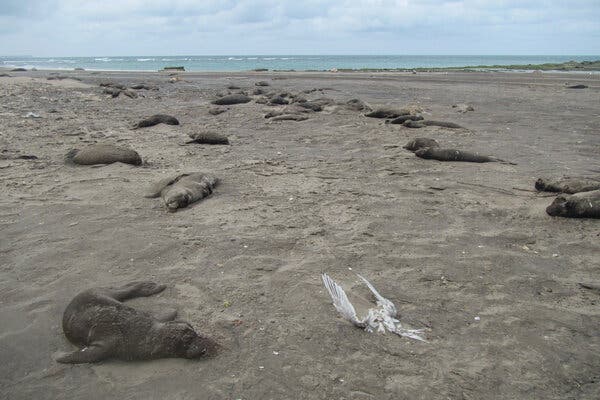Bird Flu
Huge die-offs of elephant seals occurred after the virus gained nearly 20 troublesome new mutations, scientists found.
Elephant seals in South America died in massive numbers because the bird flu virus acquired mutations that allowed it to spread among mammals, according to a new study.
The research offers the first genetic and epidemiological evidence of bird flu virus transmission among mammals. And the findings hold a warning: The virus, called H5N1, may similarly transform to cause large-scale infections in other mammalian species, including people.
The bird flu virus is responsible for an ongoing outbreak in dairy cows in the United States. Since March, it has been detected in cows in nine states, and in wastewater from several others.
The virus may already be spreading from cow to cow, too, but federal officials have said that the more likely explanation for the outbreak is that it is spreading through contaminated milk.
H5N1 is also presumed to have spread among mink on a fur farm in Spain. But the new study is the first to pull together different streams of evidence that substantiate transmission from mammal to mammal.
The study was posted online on Saturday and has not been peer reviewed. But genetic analysis of the virus, and the scale and timing of infections in sea mammals in South America, all suggest that the animals acquired the virus from one another, not from infected birds, the researchers said.

